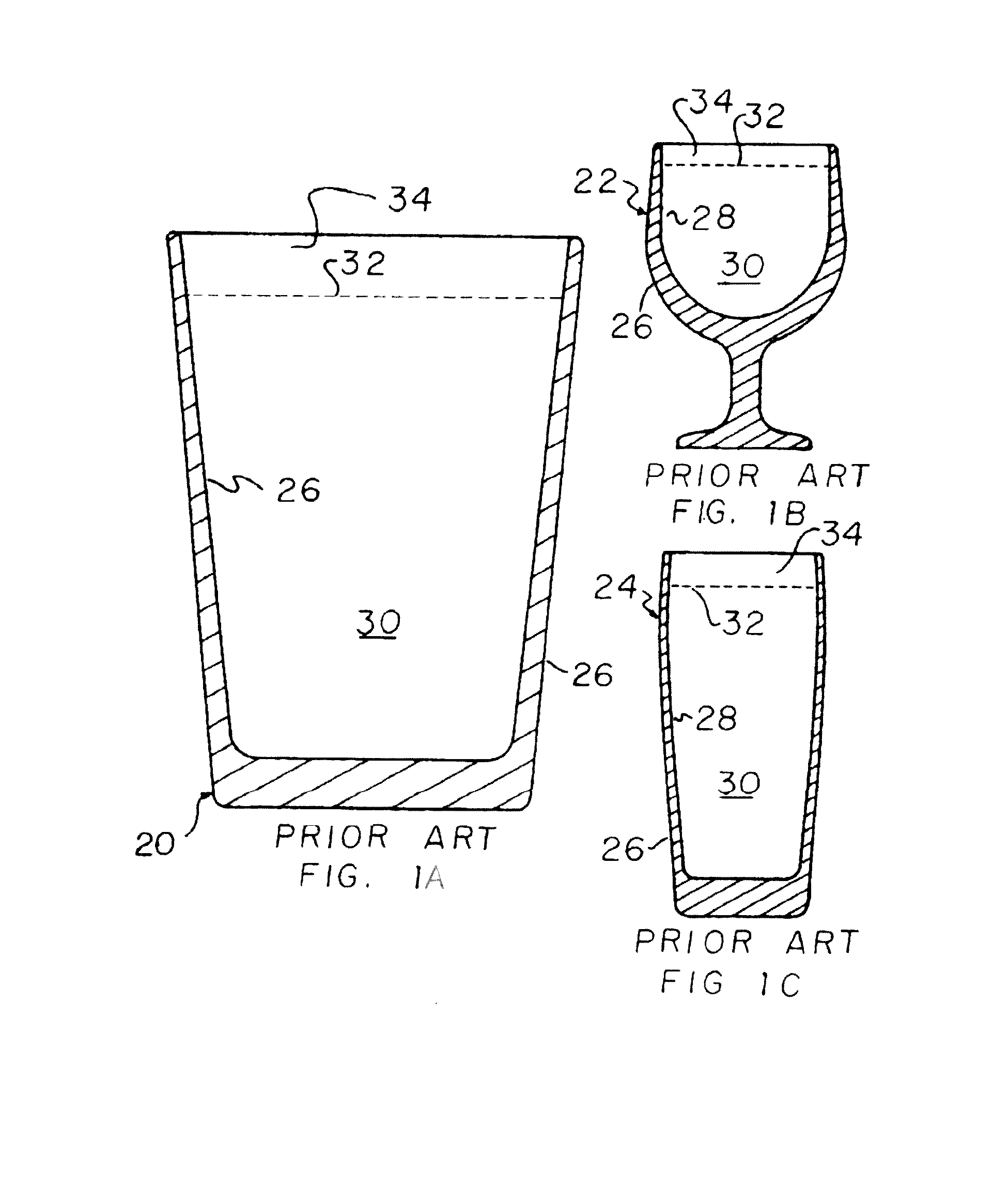Enhanced nucleating beverage container, system and method
a beverage container and nucleation technology, applied in the direction of drinking vessels, transportation and packaging, packaging, etc., can solve the problems of different taste and/or loss of freshness, no longer fresh, undesired both from the consumer and vendor perspective, etc., to enhance nucleation, reduce surface tension, and increase both aesthetic appeal and aroma
- Summary
- Abstract
- Description
- Claims
- Application Information
AI Technical Summary
Benefits of technology
Problems solved by technology
Method used
Image
Examples
Embodiment Construction
[0057]Referring now to the drawings, FIGS. 1A, 1B and 1C, show representative commercially available prior art beverage containers 20, 22, and 24, to illustrate just a few of the types of containers with which the present invention can be used. Container 20 is a conventional widely commercially available pint glass container, container 22 is a bowl style, and container 24 is a tulip style, each of which can be made of a suitable material, such as, but not limited to, glass or plastics, and each of which can be generally defined as including a sidewall 26 having a generally upstanding inner surface 28 bounding an upwardly open cavity 30 for receiving and holding a liquid beverage, which for purposes here will be a carbonated beverage, particularly a beer, ale, or stout. These and any of the other containers with which the invention is used can be round, oval other curved shape, or polygonal in sectional shape when viewed from above. Here, it should be understood that the present inve...
PUM
| Property | Measurement | Unit |
|---|---|---|
| height | aaaaa | aaaaa |
| volumes | aaaaa | aaaaa |
| volumes | aaaaa | aaaaa |
Abstract
Description
Claims
Application Information
 Login to View More
Login to View More - R&D
- Intellectual Property
- Life Sciences
- Materials
- Tech Scout
- Unparalleled Data Quality
- Higher Quality Content
- 60% Fewer Hallucinations
Browse by: Latest US Patents, China's latest patents, Technical Efficacy Thesaurus, Application Domain, Technology Topic, Popular Technical Reports.
© 2025 PatSnap. All rights reserved.Legal|Privacy policy|Modern Slavery Act Transparency Statement|Sitemap|About US| Contact US: help@patsnap.com



